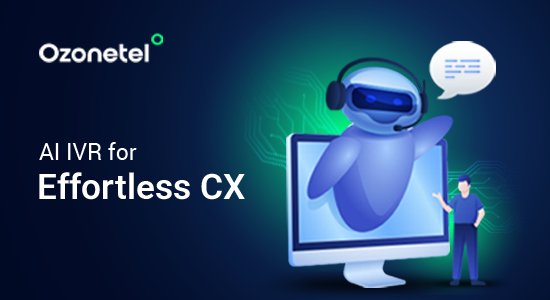- Resources
- What Is Hyper-Personalization?
What Is Hyper-Personalization?

Many brands struggle to connect with customers on a meaningful level, leading to lower engagement and missed sales opportunities. This is because traditional marketing strategies often fail to connect because they treat all customers as a one single group.
To solve this problem, marketers are increasingly adopting a hyper-personalized approach that uses advanced analytics and artificial intelligence to anticipate customer needs and preferences.
In this blog, we’ll discuss what hyper-personalization is, how it works, along with the benefits and challenges of implementing those strategies for your business.
In this article, we will explore:
What Is Customer Onboarding?
The customer onboarding process focuses on nurturing new customers—ensuring they are properly set up, familiar with your product, and comfortable using it. The purpose of customer onboarding is to provide value to your consumers as soon as possible so that they continue to return to your product and quickly embrace it as part of their regular work routine.
What Is Hyper-Personalization?
Hyper-personalization is about taking personalization to the next level by using real-time data, AI, and machine learning to create individualized customer experiences. Rather than just segmenting your audience, hyper-personalization allows you to tailor your content, products, or services to each person’s unique preferences, behaviors, and context.
This method helps you engage customers in ways that feel relevant and timely, making their journey smoother and more meaningful.
Basically, when you implement hyper-personalization, you aren’t just reacting to what a customer has done. Instead, you’re predicting what they might need next and proactively delivering that experience.
For example, a fitness app might offer personalized workout recommendations based on a user’s location, fitness level, and previous activities—ensuring they always get the most relevant and useful suggestions.
The Evolution of Personalization to Hyper-Personalization
Initially, personalization was about making small tweaks to generic messages—like greeting customers by name or showing them products they had previously viewed. While these efforts made interactions feel a bit more tailored, they were still limited in scope.
As customer expectations grew, personalization evolved into what we now call hyper-personalization. Hyper-personalization takes traditional personalization much further by using real-time data, AI, and machine learning to provide experiences that are specific to individual users—not just segments of a larger audience.

| Aspect | Personalization | Hyper-Personalization |
|---|---|---|
| Data Use | Basic data like name or purchase history. | Real-time data, AI, and predictive analytics. (e.g., suggesting complementary products or reminding customers of repurchases) |
| Customer Segmentation | Based on general demographics or user segments. | Tailored to individual user behaviors and preferences. |
| Content Customization | Limited to surface-level changes (e.g., name, location). | Dynamic content that adapts in real-time. For instance, sending personalized travel itineraries based on past trips. |
| Customer Experience | Mostly reactive, offering basic recommendations or deals. | Proactive, anticipating user needs before they realize them. |
| Technology Involved | Rule-based systems relying on predefined triggers. | AI-driven, using machine learning to adapt continuously. |
How Hyper-Personalization Works
From gathering data to making split-second decisions, hyper-personalization is a complex approach. So, here’s a step-by-step breakdown of how it all comes together:
Data Collection
This includes all types of data – from basic information like your name and email address to detailed information such as:
- Behavioral data: How users interact with websites, apps, and products
- Transactional data: Customer’s purchase history and patterns
- Contextual data: Customer’s location, device type, and even the weather in your area
- Social data: Insights from customer’s social media activity (if you’ve allowed access)
- Third-party data: Additional information purchased from data providers
For example, if you’re running an e-commerce business, you can collect data on what products customers are browsing, what they’ve added to their cart, or what emails they’ve opened.
Real-Time Analytics
Hyper-personalization isn’t effective if it’s delayed—timing is everything. Real-time analytics allow you to track a customer’s behavior as they interact with your website, app, or other touchpoints, enabling immediate adjustments.
For instance, if a user lingers on a product page without making a purchase, you could use this data to trigger a personalized offer or recommendation based on their past preferences, increasing the chances of conversion.
Predictive Analytics
Here’s where things get really interesting. Using machine learning algorithms, predictive analytics takes all that historical and real-time data and tries to forecast your future behavior. It gives you answers to to questions such as:
- What products is this person likely to be interested in next?
- When are they most likely to make a purchase?
- What type of content will resonate with them?
These predictions allow businesses to proactively offer you relevant products, content, or services – sometimes before you even realize you want them. For example, a streaming service might recommend new content based on what similar users have enjoyed, even before a user starts searching for something new.
Feedback Collection
Finally, hyper-personalization thrives on a continuous loop of feedback – it isn’t a ‘set it and forget it’ process. This feedback can come in many forms:
- Explicit feedback: Ratings, reviews, or surveys where you directly share your opinions.
- Implicit feedback: Your actions (or inactions) in response to personalized content.
- A/B testing: Comparing how different personalization strategies perform across user groups.
6 Benefits of Hyper-Personalization
If you’re looking to engage customers more effectively and boost conversions, here are six key benefits of hyper-personalization:
Better Customer Experiences: Hyper-personalization enables you to understand individual preferences deeply, allowing you to deliver content that speaks directly to them. Instead of impersonal messaging, which often gets ignored, hyper-personalized communication strikes a chord, making your customers feel valued.
Increased Conversions: Tailoring product recommendations or offers based on real-time behaviors and preferences allows you to increase the chances of customers spending more time on your website and eventually making a purchase. This reduces bounce rates and leads to more orders being placed.
Enhanced Customer Loyalty: When your messages are tailored to their preferences, they feel heard and understood, which builds a stronger connection. Hyper-personalization allows you to avoid the one-size-fits-all approach, creating experiences that make customers return for future purchases.
Improved Customer Lifetime Value: Hyper-personalization helps strengthen customer relationships by consistently delivering value in every interaction. This, in turn, improves Customer Lifetime Value (CLV) as your brand becomes the go-to solution for their needs.
Increased Net Promoter Score (NPS): With hyper-personalization, you can enhance customer satisfaction, which naturally leads to an increase in your Net Promoter Score. This score reflects how likely your customers are to recommend your brand to others. A higher NPS means more positive word-of-mouth and a stronger reputation in your industry.
Higher Revenue Growth: Hyper-personalization helps you optimize product offers and tailor campaigns that resonate deeply with each customer, resulting in more conversions without the need for excessive markdowns. Not only does this boost your revenue, but it also improves your bottom line by reducing unnecessary discounts and offering products to those most likely to buy.
Challenges to Hyper-Personalization
When implementing hyper-personalized strategies, businesses should be aware of these potential challenges:
Resource Intensiveness
Hyper-personalization requires a significant investment in advanced technology, such as AI and machine learning tools, as well as the expertise to manage these systems. Smaller businesses or those with limited budgets may struggle to allocate the necessary resources. For them, the challenge lies in finding scalable solutions.
Solution: Start small by leveraging affordable tools that automate basic personalization. Focus on simple customer data, like browsing history or purchase behavior, to personalize content in manageable ways before scaling up.
Maintenance Challenges
Consumer preferences and market conditions change frequently, and failing to adjust your campaigns accordingly can result in irrelevant and ineffective messaging. Personalization efforts that aren’t regularly fine-tuned will quickly become outdated.
Solution: Implement a system for ongoing tracking and analysis of customer data to ensure you’re always delivering relevant content. Use tools that provide real-time insights so you can adjust campaigns as needed, keeping your efforts fresh and aligned with evolving trends.
Limited Content Diversity
A common issue with hyper-personalization is that, by focusing too narrowly on an individual’s preferences, you risk limiting the variety of content they are exposed to. This can reduce opportunities for customers to discover new products or services that they hadn’t initially considered but might still find valuable.
Solution: To maintain content diversity, introduce broader recommendations periodically, mixing personalized content with discovery options. This ensures your customers get a well-rounded experience while still feeling that the content is tailored to their interests.
Data Privacy Concerns
Hyper-personalization heavily relies on the collection and analysis of user data, which can raise serious privacy concerns. With stricter regulations like GDPR and CCPA, and growing consumer awareness around data privacy, businesses must tread carefully. Collecting too much data or being too invasive can erode trust.
Solution: Be transparent about data collection practices and ensure full compliance with privacy laws. Also, allow customers to opt in or out of data sharing, and clearly explain how their data is used to improve their experience.
Risk of Over personalization
While customers appreciate personalized content, overdoing it can feel invasive. Flooding users with hyper-specific content or messages based on every small action they take can overwhelm or even annoy them, leading to disengagement.
Solution: Focus on delivering content that is relevant but not intrusive. Plus, monitor user engagement closely to ensure your efforts are enhancing the customer experience rather than overwhelming them.
Best Practises for Hyper-Personalization
As highlighted by David Mannheim in The Person in Personalisation, while hyper-personalization has its challenges, it’s essential to establish a solid foundation in marketing fundamentals. So, here are some tips that will effectively help you implement a hyper-personalized strategy:
Make Full Use of First-Party Data
According to Ryan Turner, founder of Ecommerce Intelligence, this begins with collecting essential information like names, email addresses, phone numbers, and communication preferences. However, relying solely on this basic data limits personalization opportunities.
Therefore, various leading brands achieve advanced personalization by gathering granular data at various stages of the buying cycle. For instance, a jewelry retailer can tailor marketing efforts by collecting information such as:
- Gender
- Birthdate
- Jewelry color preferences (e.g., gold, silver, platinum)
- Style preferences (e.g., necklaces, earrings, anklets)
This data enables brands to create highly personalized communications across multiple digital channels, especially through email marketing and SMS.
Hyper-Personalize the Medium
Tailor not just the data but the content itself, including text, graphics, and videos. Dynamic text insertion can personalize content based on customer data, enhancing engagement. For example, a greeting in an email might read,
“Hi [First Name], enjoy a 20% discount on [Favorite Category] items at your local [Nearest Store Location].”
Personalized graphics and videos further enhance customer engagement by providing visuals tailored to individual preferences.
Use Purchase Behavior Segmentation
Moving beyond basic demographics, brands can refine hyper-personalization through purchase behavior segmentation. Aleksandra Korczynska, former CMO at GetResponse, suggests categorizing customers based on their buying actions:
- Existing customers
- Prospects who haven’t made a purchase
- Customers who spent above a certain amount
- Returning customers with multiple purchases
- Inactive customers who haven’t bought in a set timeframe
Additionally, implementing lead scoring and tagging based on user behaviors like clicks and downloads can enhance segmentation.
Personalize Content
Personalizing content involves tailoring messages to align with individual customer preferences and behaviors.
- Implement marketing automation software that supports dynamic content features. This allows you to change elements in emails or landing pages based on customer profiles.
- Use recommendation algorithms to suggest products or content based on previous interactions. For example, if a customer frequently buys running shoes, promote related accessories.
- Develop personalized landing pages that reflect customers’ interests. For instance, if a customer clicks on a specific category in an email, direct them to a landing page showcasing those products.
Use Omnichannel Engagement
Omnichannel engagement involves delivering a seamless and consistent brand experience across multiple channels.
- Identify the channels most relevant to your audience (e.g., email, social media, SMS) and plan tailored messaging for each.
- Ensure that all channels feature consistent branding and messaging. For example, if promoting a sale on social media, ensure the same promotion is highlighted in emails and on your website.
- Use customer analytics tools to track how customers engage across channels. This data will inform future marketing strategies and help optimize the customer journey.
For example, a leading Non-Banking Financial Company (NBFC) enhanced customer service responsiveness and automated sales calls using Ozonetel’s CX solution. They leveraged a Self-service IVR (Interactive Voice Response) system to automate 50% of inbound queries, including requests for statements of accounts, welcome letters, and payment rescheduling. Read the entire case study here!
Analyze Customer Insights Regularly
Regular analysis of customer data provides valuable insights into trends and behaviors. This practice helps brands adapt their strategies to better meet customer needs and preferences.
- Use analytics platforms to gather data on customer interactions and engagement metrics. Tools like Google Analytics can provide insights into website behavior.
- Identify key performance indicators (KPIs) that matter to your business, such as open rates, conversion rates, and customer retention.
- Generate regular reports to summarize findings and identify actionable insights. Share these insights with relevant teams to inform future marketing decisions.
Examples of Hyper-Personalization
If you’re still not convinced about the benefits if hyper-personalization or are not sure how to implement it in your organization; here are some examples that will give you a fair idea:
Deltin Royale
Deltin Royale, an offshore casino, used personalized video messages featuring a brand ambassador to invite customers to an exclusive event. This approach reactivated 16% of dormant customers and achieved 100% booking, proving the power of personalization in driving engagement.
Takeaway: If you’re looking to re-engage inactive customers, personalized outreach—whether through video, email, or direct messaging—can deliver impressive results.
Hilton Honors
Hilton Honors’ app is a perfect example of making travel seamless through hyper-personalization. Designed for loyalty program members, the app allows users to:
- Unlock hotel rooms with their smartphones.
- Control in-room tech like TVs and streaming services via their mobile devices.
- Chat with hotel staff for requests and payments.
Takeaway: Focus on understanding customer preferences and simplifying the user experience through intuitive, omnichannel solutions.
Netflix
Netflix takes personalization to the next level by offering recommendations based on user behavior, not just ratings. By analyzing how long you watch a show, when you pause, or even how you browse their content, Netflix delivers highly relevant suggestions. This tailored approach even influences Netflix’s original programming, like the creation of shows such as House of Cards.
Takeaway: Use customer interaction data to offer more meaningful and relevant content. The more personal and accurate your suggestions, the more likely you’ll keep your audience engaged.

Honda
Honda’s use of hyper-personalized onboarding videos helps new customers better understand their purchase agreements, including payment plans, monthly costs, and schedules. Rather than sifting through paperwork, customers can easily grasp all the details in a short video—leading to a more pleasant buying journey. Honda also prioritizes security, partnering with platforms like Idomoo to ensure customer data is protected.
Takeaway: When you personalize experiences, prioritize transparency and data security to build trust.

Grammarly
Grammarly goes beyond being just a spelling and grammar checker by offering personalized writing insights to each user. It collects data on how you write, such as common mistakes and writing tone, and then uses that data to provide real-time feedback.
Additionally, it compares your productivity to other users, giving you personalized insights like, “You were more productive than 80% of Grammarly users this week.”
Takeaway: Hyper-personalization should make your users feel seen and supported, like Grammarly does by guiding them through their writing journey. To replicate this, offer feedback that’s customized, actionable, and aligned with each user’s unique goals.
Conclusion
Hyper-personalization represents a significant shift in how brands engage with customers, moving beyond basic personalization to deliver tailored experiences that resonate on an individual level. Basically, with this strategy, you’re not just using a customer’s name in an email; you’re customizing the entire user journey based on real-time behavior, preferences, and needs.
Want to see what Ozonetel can do for your company? Sign up today for a free 7-day trial.
Prashanth Kancherla
Chief Operating Officer, Ozonetel Communications
Over the past decade, Prashanth has worked with 3000+ customer experience and contact center leaders...
Chief Operating Officer, Ozonetel Communications
Over the past decade, Prashanth has worked with 3000+ customer experience and contact center leaders to comprehensively understand the need for effective and efficient customer communications at every step of their journey with a brand. Deeply embedded in today’s CCaaS ecosystem, he has been instrumental in Ozonetel's growth and contributed in various roles including product management, sales, and solution architecture.
Frequently Asked Questions
A digital strategy refers to a plan that outlines how an organization will use digital technologies to meet its business objectives. It includes various aspects such as marketing, operations, customer engagement, and data management to create a comprehensive approach that allows you to seamlessly navigate digital challenges.
The four pillars of a digital strategy are customer experience, operational processes, business model, and technology. Each pillar is essential for helping organizations respond to market changes, improve customer satisfaction, and drive growth through effective digital solutions.
The three layers of digital strategy consist of the foundational layer, operational layer, and transformational layer. The foundational layer focuses on building the necessary technology and infrastructure, the operational layer emphasizes improving processes and customer interactions, while the transformational layer targets innovation and adapting to changing market conditions.









